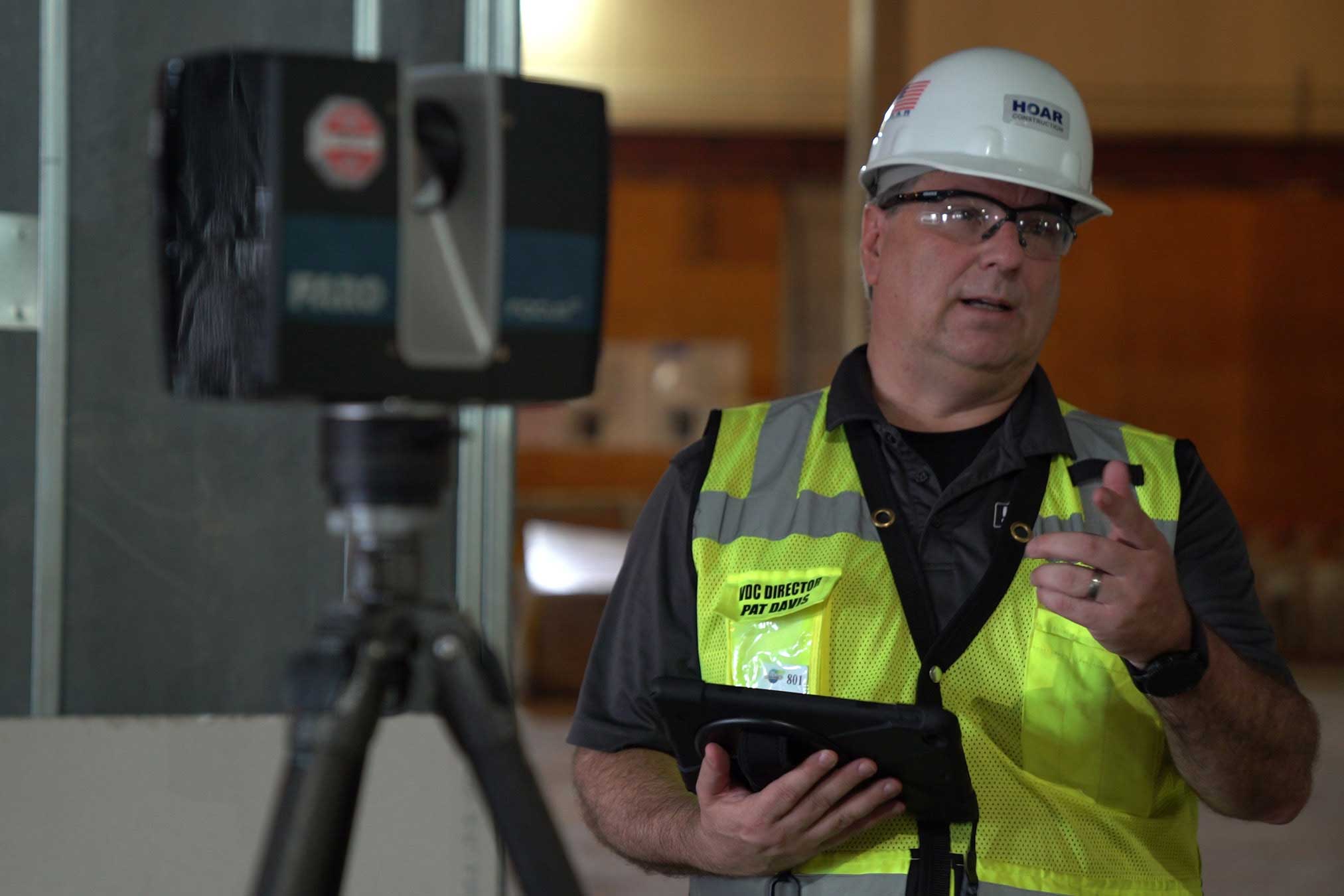
The year was 1996 – only 100,000 websites were online, Michael Jordan was still playing with the Bulls, and DVD’s had just launched in Japan. That was also the year Hoar Construction first implemented AOL email for the entire company. It seems impossible to imagine doing business without email now, but back then our employees were just learning how to embrace the technology. In the 23 years since we made the decision to communicate via email, technology has advanced at an astonishing pace. But we still approach each new emerging trend with the same process — research, vet, determine the value added, and only then do we consider implementing the technology into our operations.
There’s a big difference between using technology and being tech-savvy. It comes down to being practical and strategic. Are you buying the latest gadget just because it’s new? Or are you investing in a tool that will add value to your client’s project? It’s like the battle between the Blu-Ray and the HD DVD format. Or VHS and Betamax. In both cases, the latter quickly became obsolete and millions of people were stuck with technology that they couldn’t use or enjoy. Ensuring technology adds value to a project is just one reason you need to hire a tech-savvy contractor, here’s five reasons why you can’t afford not to:
1. Your Bottom Line
If technology doesn’t add value, it’s just costing your project money. In just the last five years, construction technology has increased in both speed of development and employment by the industry. We know that buying an expensive, autonomous piece of equipment or virtual reality tool doesn’t do us or our clients any good if we haven’t tested it, trained on it, and proven it will add value to our projects — either by increasing efficiency, and safety, or reducing cost. Be wary of a contractor who wants to roll out the latest and greatest technology on your project but can’t clearly define the benefits you’ll see.
2. Security and Protection
With advancements in technology, comes new and increased security threats. Credit cards revolutionized the way we shop, but it didn’t take long for criminals to find a way to use the technology to their advantage. I recently participated in a cyber security forum and one of the topics we covered is how drones and even cranes are being hacked. Just think about that. Someone can take remote control of a crane with the right technology and swing it or release a load in the middle of a downtown project. We have taken measures with all our cranes to ensure they are secure and can’t be hijacked.
If that seems like an extreme example to you, think about the sensitive project information, drawings, and data you share with your project teams over email or through file sharing platforms. Our Technology division is constantly monitoring our cyber security threats while also looking for new ways to prevent data breaches across our sites . This includes enhanced security measures for all of our computing devices and networks across the country. We also work closely with the technology companies we partner with to protect the privacy and integrity of our clients’ information.
3. Accurate Information, No Waiting
We’ve talked about the need for thorough vetting and security when using new technology, but the right tech really can add tremendous value to your project. I think the greatest benefit technology offers is the ability to make better informed decisions in real time. In just the last few years, non-traditional tech companies have invested in the AEC industry, and the products they’re releasing are revolutionary. There are autonomous rovers that can roam around the job site and report precise production updates in a 24-hour period. There are iOT (internet of things) devices now that can monitor concrete pours or issue reports on current site conditions — instant information at your fingertips, without waiting for someone to come out and do a survey.
4. Cost Savings
Research done by the Associated General Contractors of America estimatesthe average cost per clash in the field is more than $1,000. That’s approximately $1,000 or more out of your budget every time there’s an issue that causes rework. Virtual Design Construction (VDC) and Building Information Modeling (BIM) are not new tools, but the systems are getting better and smarter every year. We think these tools are so valuable, we have an entire team from our Technology Division devoted to using VDC and BIM to coordinate with project teams, identify potential clashes, and mitigate the risk before construction ever begins. We know that we can save our client’s money by preventing as many clashes as possible during preconstruction.
5. Improved Quality
When drawings rely on individual interpretation, the potential for mistakes in the field is inevitable. We’ve had great success using mixed-reality technology to give our trade partners the opportunity to see exactly how the building should be put together. With mixed-reality, you can stand in the space and the drawings come to life before your eyes – allowing you to walk around the entire area and see the building components from every angle. This tool also allows us to show our clients exactly how their building will look. It’s a step above virtual reality, which keeps you tethered to a computer or in a room. Mixed reality is as close to experiencing the final product as possible, as early in construction as you want.
Technology is exciting. With all the advancements in artificial intelligence, robotics, intelligent analytics, mixed reality, and more, there is a seemingly infinite number of potential tools you can put on your job sites or in the hands of your project teams. To make sure your project is getting value out of technology, hire a tech-savvy builder. The members of our technology division invest the time to research anywhere from 50 to 100 tech tools every year. We look into each one, test it, build a business case for it, and out of those — only 5% might actually make it into the field. When it comes to construction technology, builders must look past the “cool factor,” and determine exactly if and how it will bring value to our clients. To see how we are using technology in the field, click here for a short video.

